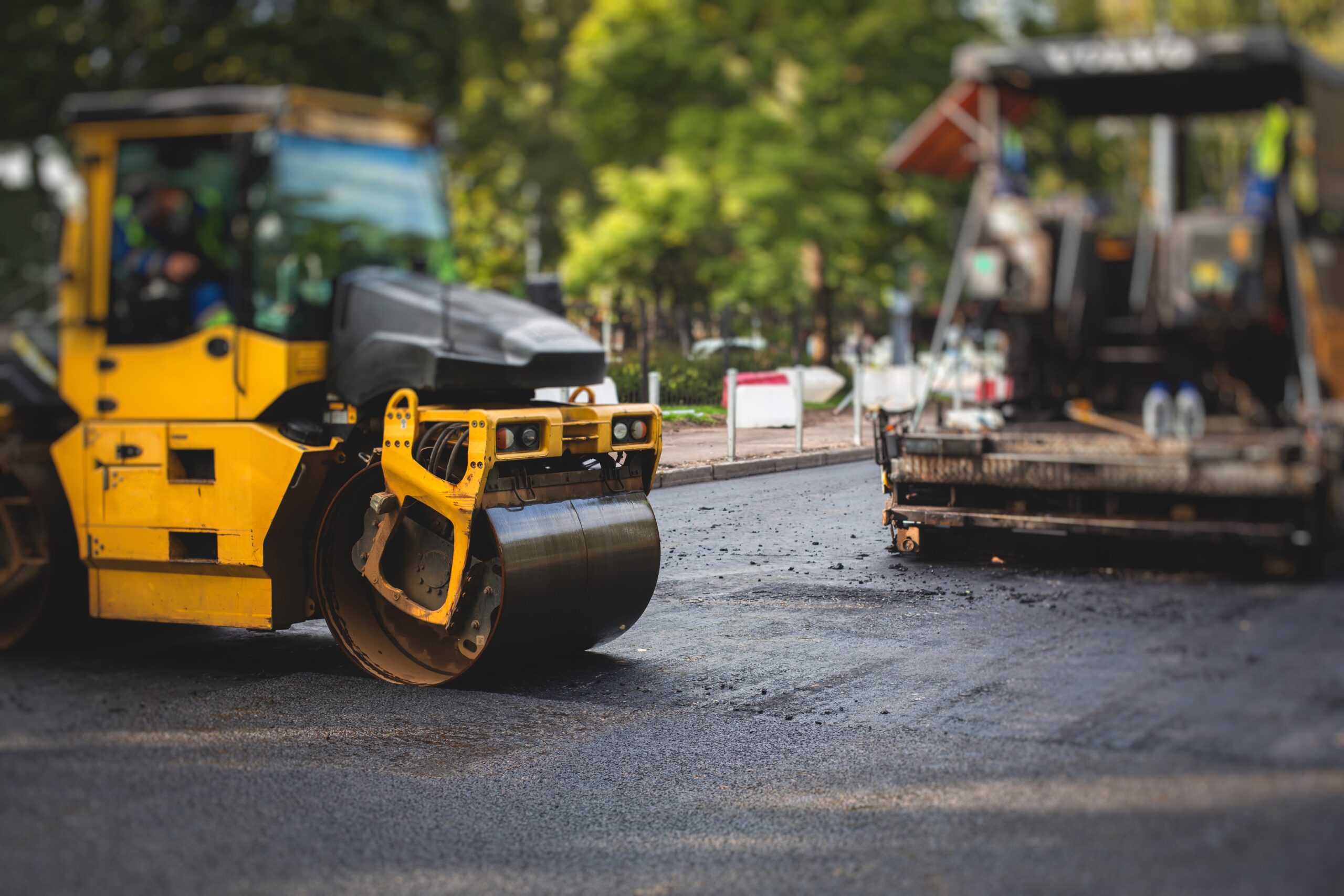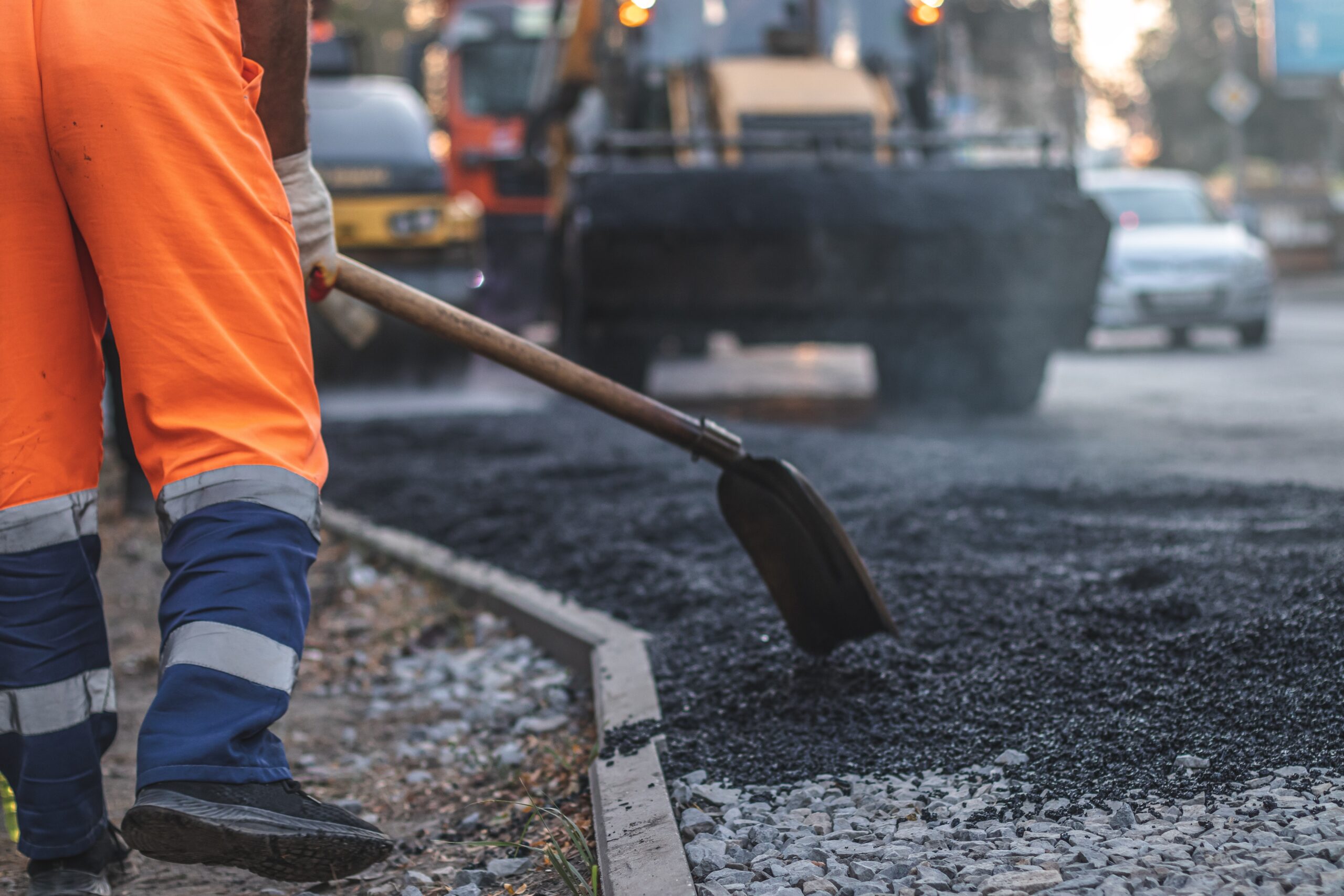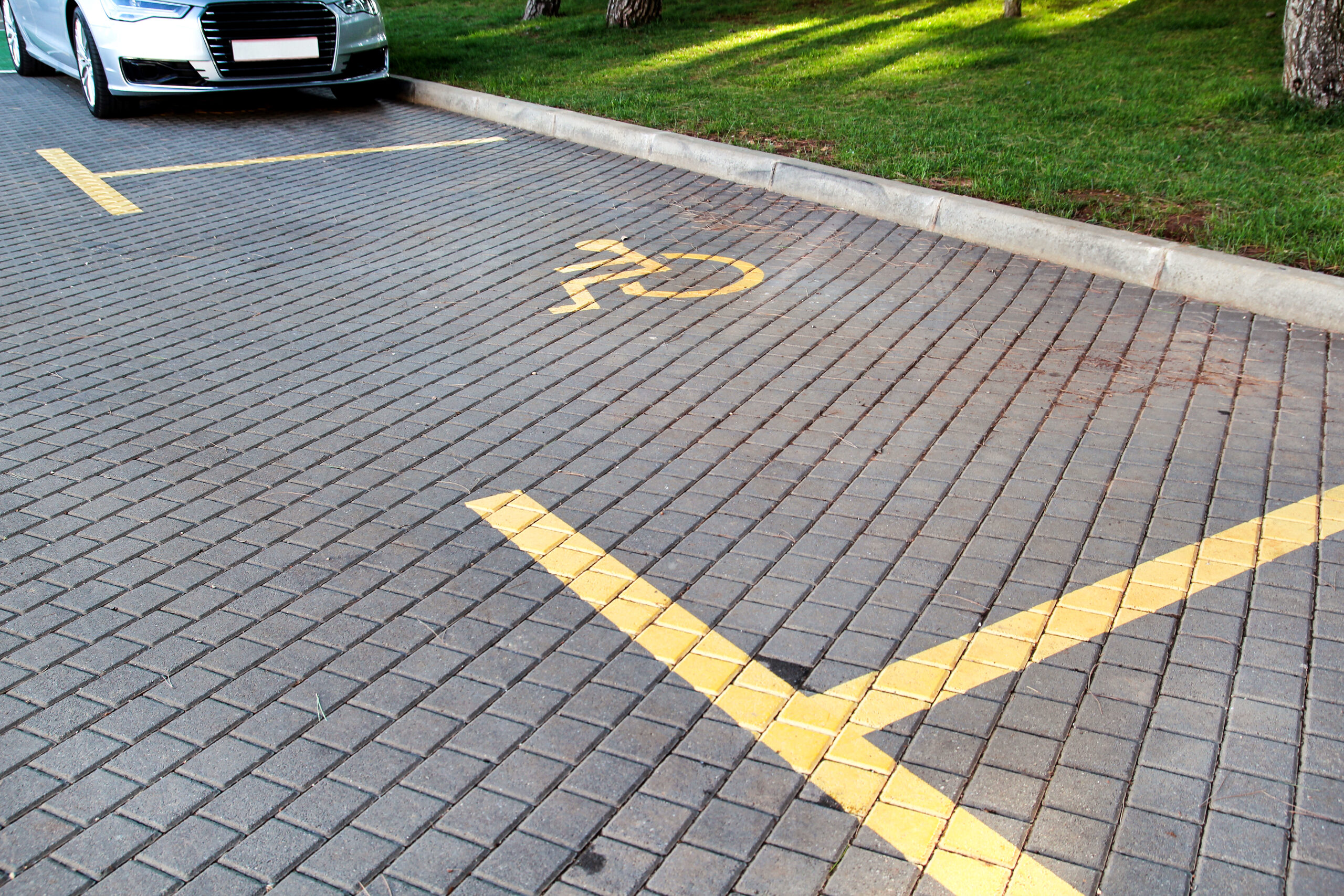
Denver’s high-altitude climate makes it one of the most challenging regions in the United States for asphalt pavement longevity. Each winter, fluctuating temperatures cause frequent freeze-thaw cycles, where melted snow seeps into tiny pavement cracks, freezes overnight, expands, and thaws again. This constant expansion and contraction places repeated stress on asphalt surfaces, leading to cracking, ravelling, and pothole formation.
Research from the U.S. Federal Highway Administration (FHWA) indicates that freeze-thaw cycles are one of the primary causes of premature pavement deterioration in cold-weather regions. These cycles contribute to material fatigue and loss of structural integrity over time. This process can occur 40 to 60 times in a typical Denver winter, accelerating wear even on newer, well-installed pavement.
In this blog, we’ll examine how Denver’s winter patterns affect asphalt performance, highlight the early warning signs of damage, and share proven ways to prevent costly repairs through better design, durable materials, and proactive maintenance planning.
Why Denver’s Winter Weather Challenges Asphalt
Denver’s elevation, dry air, and sharp temperature swings create ideal conditions for asphalt damage. Snowmelt seeps into pavement cracks during the day and freezes at night, expanding and breaking the surface from within. Over time, this repeated stress weakens the asphalt, leading to cracks, ruts, and potholes.
1. How Freeze-Thaw Cycles Break Down Asphalt
When water enters asphalt pores and freezes, it expands by about 9%, pushing the material apart. Each thaw leaves small gaps that gradually widen with every cycle, making Denver’s pavements especially vulnerable during long, cold winters.
2. Denver’s Climate: A Perfect Storm for Pavement Stress
Asphalt expands and contracts constantly because Denver often sees 30°F or more daily winter temperature swings. Moisture, combined with these extreme shifts, accelerates structural fatigue.
The Federal Highway Administration’s Long-Term Pavement Performance (LTPP) Study found that regions with frequent freeze-thaw cycles, like Denver’s “moderate-freeze” zone, experience significantly higher cracking and roughness over time compared to the no-freeze areas. The study confirmed that deep frost and frequent cycles significantly reduce asphalt pavement lifespan.
Can asphalt survive Denver’s freeze-thaw conditions?
Yes, with the right design and upkeep. Asphalt built with polymer-modified binders, proper drainage, regular sealcoating and crack repair can withstand Denver’s intense freeze-thaw cycles far better than untreated surfaces.
The Chain Reaction That Leads to Asphalt Damage
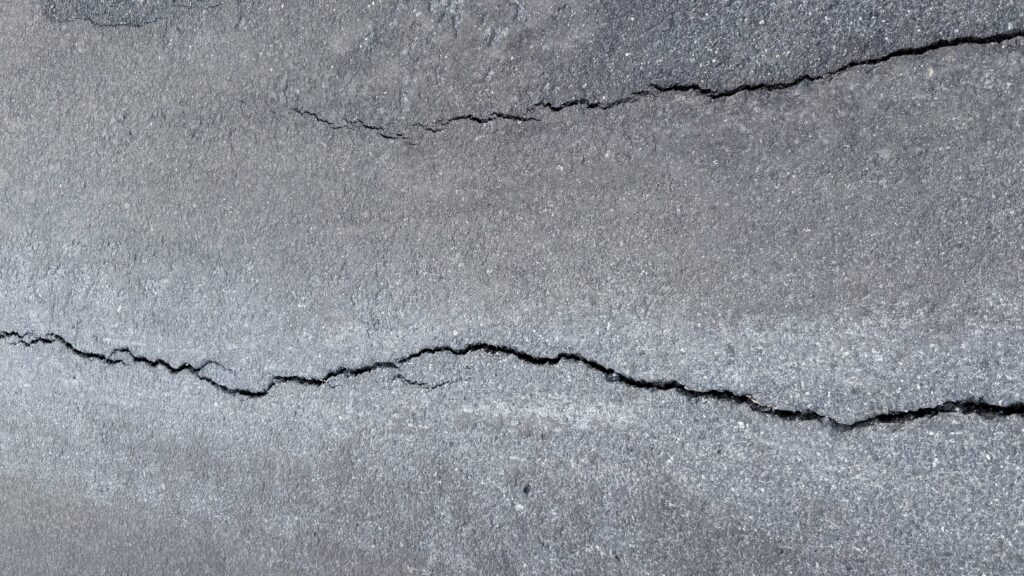
Once freeze–thaw cycles begin, deterioration becomes self-sustaining. Each cycle widens existing cracks, lets in more water, and sets up the next round of damage.
1. Surface Cracking, Alligatoring, and Potholes
Small cracks may look harmless, but they’re open channels for moisture. When that water freezes, it expands and branches, cracking into an alligator pattern. As bonding to the base weakens, the surface delaminates, and potholes form, reducing safety and structural capacity.
2. Weakening of Base Layers and Subgrade
Moisture that reaches the base or subgrade can freeze and heave the pavement upward. Thawing then leaves voids and soft spots that traffic quickly worsens into depressions and ruts.
3. Early Warning Signs Property Owners Should Notice
Watch for early indicators of freeze–thaw damage before minor issues escalate into costly repairs.
- Hairline cracks after a cold snap
- Water pooling after snowmelt
- Uneven or soft surface spots
- Potholes appear in the spring.
Do small cracks always lead to significant failures?
Not immediately, but unsealed cracks act as moisture channels that undermine the base and accelerate deterioration. Sealing early interrupts the water-freeze-thaw cycle that turns small cracks into major failures.
Why Proper Drainage and Grading Prevent Costly Damage
When meltwater can’t leave the surface, it seeps into the pavement, freezes, and multiplies minor flaws into expensive failures. Smart grading and simple drainage upgrades keep water moving and your asphalt intact.
- Hit the right cross-slope (about 1–2%): A gentle, consistent slope moves meltwater to gutters and inlets instead of letting it sit. Keeping water off the surface cuts freeze-thaw stress and slows crack growth. (Typical roadway tangent cross-slopes fall around this range; pedestrian routes cap cross-slope near 2%.)
- Correct grades before overlay (mill, don’t just pave over): Milling removes highs/lows and rebuilds the crown so “birdbaths” don’t return under the new mat. Paving over low spots traps water and guarantees premature failures.
- Add point drainage where water collects: Trench drains at docks/ramps and catch basins at low points intercept runoff fast. Shorter ponding time means less infiltration into cracks and base layers.
- Use subsurface drainage on wet edges: Underdrains or a permeable/open-graded base let water move laterally to an outlet. A drier subgrade resists pumping, rutting, and freeze heave.
- Control roof runoff and keep inlets clear: Tie downspouts into storm lines and keep grates free of leaves, debris, and snow berms. Clean flow paths prevent ponding that accelerates winter damage.
- Seal joints and smooth material transitions: Utility cuts, curb returns, and asphalt-to-concrete seams are common leak paths. Tight seals and smooth transitions stop water from sneaking under the mat.
Materials and Mixes That Withstand Denver Winters
Not all asphalt is built for cold. In Denver’s high-altitude climate, pavements last longer when the mix is dense and well-compacted, and when it uses binders engineered to remain flexible at low temperatures.
1. Asphalt Mix Designs for Freeze Resistance
Winter-ready hot-mix asphalt pairs polymer-modified binders (PG-graded to Denver’s minimum temps) with well-graded aggregates to limit air voids where water can collect. Proper compaction locks the aggregate skeleton, sheds moisture, and reduces thermal-crack initiation. Before starting, it is crucial to understand how to prepare for asphalt construction.
The FHWA Superpave binder specification ties binder grades to local climate minima, guiding the selection of low-temperature-resistant binders for cold regions.
2. Comparing Asphalt and Concrete in Cold Climates
Concrete is strong under heavy loads but less tolerant of rapid thermal contraction. Asphalt’s inherent flexibility better handles Denver’s daily winter swings, absorbing expansion/contraction without the same thermal stress. It is practical for most commercial lots with good drainage and scheduled maintenance.
Is concrete ever better than asphalt for freeze-prone areas?
With rigorous joint maintenance, reinforced concrete can suit heavy industrial loading or slow-turn areas. Asphalt’s flexibility, repair speed, and climate-tuned mix design for most Denver commercial sites deliver a stronger lifecycle fit.
Preventing Damage Before and After Winter
Preparation beats repair. A focused fall prep and a quick spring check help prevent freeze–thaw damage from turning minor issues into big invoices.
1. Fall Maintenance to Prepare for Winter
Seal visible cracks, refresh worn patches, and apply a protective surface treatment before the first hard freezes arrive. Clear drains and gutters, re-establish flow lines, and correct low areas so meltwater can’t pond and seep into the pavement.
2. Spring Repairs After the Thaw
Once the ground stabilises, walk the site and document new cracks, soft spots, ruts, and edge breaks. Patch potholes, seal active cracks, and recompact any areas with pumped fines so moisture can’t work back into the structure.
3. Long-Term Pavement Care Schedule
Plan regular crack sealing and surface treatments to keep water out and maintain a tight, weather-resistant skin. Pair this with routine drainage inspections and cleaning throughout the year so meltwater moves off the pavement rather than into it.
When wear is widespread or spot repairs become frequent, schedule a resurfacing/overlay based on the pavement’s condition, traffic demands, and budget priorities.
Can maintenance be done in the spring to undo winter damage?
It won’t reverse structural damage already done, but it halts progression, prevents minor defects from spreading, and restores a weather-tight surface.
How Freeze-Thaw Cycles Impact Commercial Asphalt Surfaces
Commercial properties live tougher lives than residential sites. Heavier axle loads, constant turning movements, and tighter schedules mean winter damage shows up sooner and becomes more expensive if it isn’t addressed quickly.
1. Parking Lots, Warehouses, and Loading Docks
Large paved areas trap more meltwater, especially near dock aprons, drive lanes, and tight turning zones. When moisture seeps into minor flaws and freezes, the surface flexes and the base loosens. Add forklifts, semi-trucks, and frequent braking, and fatigue accelerates.
Thoughtful drainage, routine crack sealing, and timely patching keep these high-stress zones stable through the season.
2. The Cost of Ignoring Minor Cracks
A hairline crack is a direct pathway for water. Left open, it grows under traffic and weather until it becomes alligator cracking, potholes, and widespread delamination, forcing larger patches or an overlay. Regular touch-ups protect budgets, reduce liability, and minimise downtime for tenants and customers.
How soon should a commercial lot be inspected after winter?
Schedule an inspection once the final freeze has passed and the pavement is dry enough to assess. Early spring walk-throughs catch new cracks, ponding, and soft spots before summer heat and traffic worsen them, and help you secure repair time on the contractor’s calendar.
Local Expertise That Keeps Denver Pavements Strong
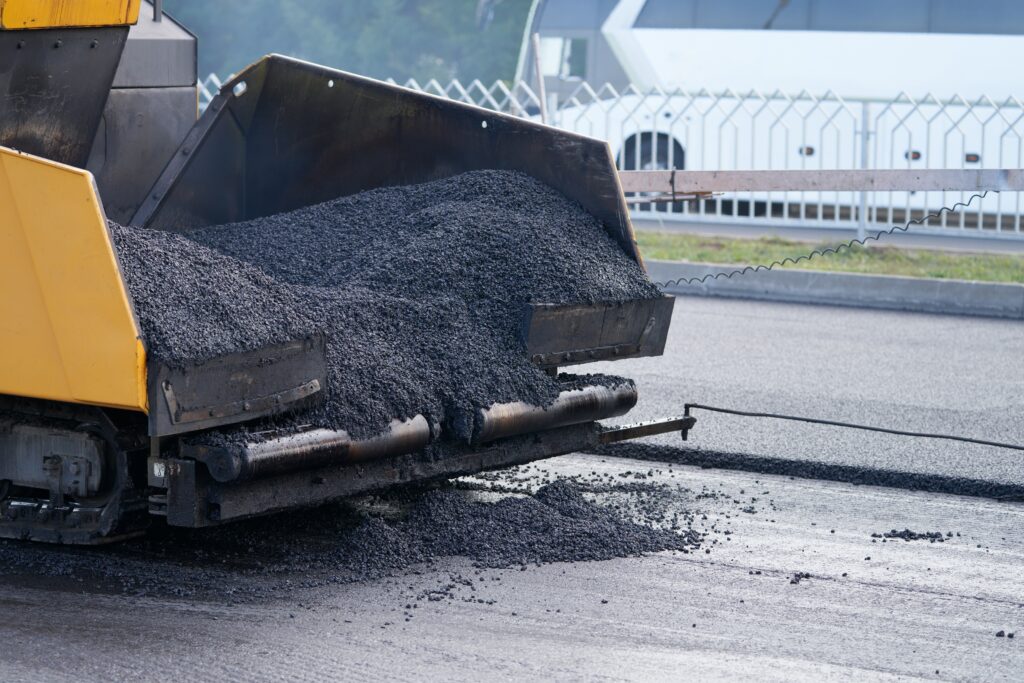
Partner with a contractor who builds for the Front Range, not the textbook. Asphalt Coatings Company tailors design, materials, and maintenance to Denver’s freeze-thaw reality. Hence, your pavement stays durable, safe, and cost-efficient year-round.
- Pro-grade inspections and equipment: Asphalt Coatings Company knows Front Range soils and temperature swings. Crews deploy precision grading, infrared patching, and climate-tuned hot-mix to deliver durable, low-disruption repairs.
- Climate-smart project design: The slope, drainage paths, mix selection, and joint details are tailored to Denver’s freeze-thaw patterns to shed water quickly and protect the base.
- Maintenance contracts that stabilize budgets: Multi-year plans bundle inspections, crack sealing, sealcoating, and spot repairs into a clear schedule, giving you priority service, fewer surprises, and safer lots.
- Lower risk and better curb appeal: Consistent care reduces emergencies, minimizes liability from potholes or trip hazards, and keeps properties looking professional for tenants and customers.
- Lifecycle savings: Planned maintenance stretches pavement life and delays costly overlays, helping you allocate capital where it matters most.
Building Stronger Pavements with Asphalt Coatings Company
Stronger pavements aren’t accidental; they’re the result of Denver-tuned design, climate-ready materials, and disciplined maintenance delivered by a local team that knows your site.
- Built-for-Denver design: We combine smart grading, proper cross-slope, and drainage detailing to move meltwater off the surface and protect the base.
- Climate-ready mixes: Hot-mix selections and compaction targets are tuned to local winter lows and daily temperature swings for better crack resistance.
- Proven field methods: Infrared patching, precision milling, and tight joint sealing deliver durable repairs with minimal disruption to tenants and traffic.
- Lifecycle maintenance: Structured plans coordinate inspections, crack sealing, sealcoating, and spot repairs to keep surfaces tight and budgets predictable.
- Transparent scheduling & safety: Clear timelines, weekend/off-hour options, and on-site safety controls keep operations running smoothly during work.
- Local track record: Nearly four decades serving Colorado properties, from church and retail lots to warehouse docks and medical campuses.
Protect Your Asphalt Before Denver’s Winter Strikes
Denver’s winters can be harsh and unpredictable, but asphalt damage doesn’t have to be inevitable. With the proper grading, high-performance materials, and a proactive maintenance plan, your pavement can withstand the city’s freeze-thaw cycles and stay strong for years.
Don’t wait until cracks and potholes appear. Protect your investment now and save on costly repairs later.
Ready to prepare your pavement for the next Colorado winter? Contact Asphalt Coatings Company today for a free site assessment or quote, and discover how our expert team keeps Denver’s parking lots, roadways, and commercial spaces durable, smooth, and safe, season after season.
Frequently Asked Questions
How many freeze-thaw cycles does Denver experience each winter?
Depending on snowfall and temperature fluctuations, Denver typically experiences 40 to 60 freeze-thaw cycles yearly. These cycles cause water to repeatedly expand and contract within pavement cracks, one of the most significant contributors to asphalt fatigue in Colorado’s Front Range.
Can snowmelt chemicals or deicers damage asphalt?
Yes. Deicing salts and chemical snowmelt products can strip protective sealants, dry out the asphalt binder, and accelerate surface erosion. When possible, use calcium magnesium acetate (CMA) or sand-based alternatives, which are gentler on asphalt surfaces.
What is the best season for asphalt sealcoating in Colorado?
The ideal time for sealcoating is late spring through early fall when daytime temperatures stay above 50°F and nights remain dry. Warm conditions help the sealer bond properly, creating a durable, watertight barrier before the next freeze-thaw cycle.
Which material performs better in high-altitude climates, concrete or asphalt?
Asphalt is generally better suited for high-altitude areas like Denver because it remains flexible in cold weather and can expand or contract without cracking. Concrete, while durable, tends to fracture more easily under rapid temperature changes.
Can infrared asphalt patching be done during the winter months?
Yes, but only in moderate winter temperatures. Infrared patching works effectively when the surface is above freezing (typically above 35°F). During extreme cold, cold-patch asphalt mixes are a safer temporary solution until springtime repairs can be completed.

